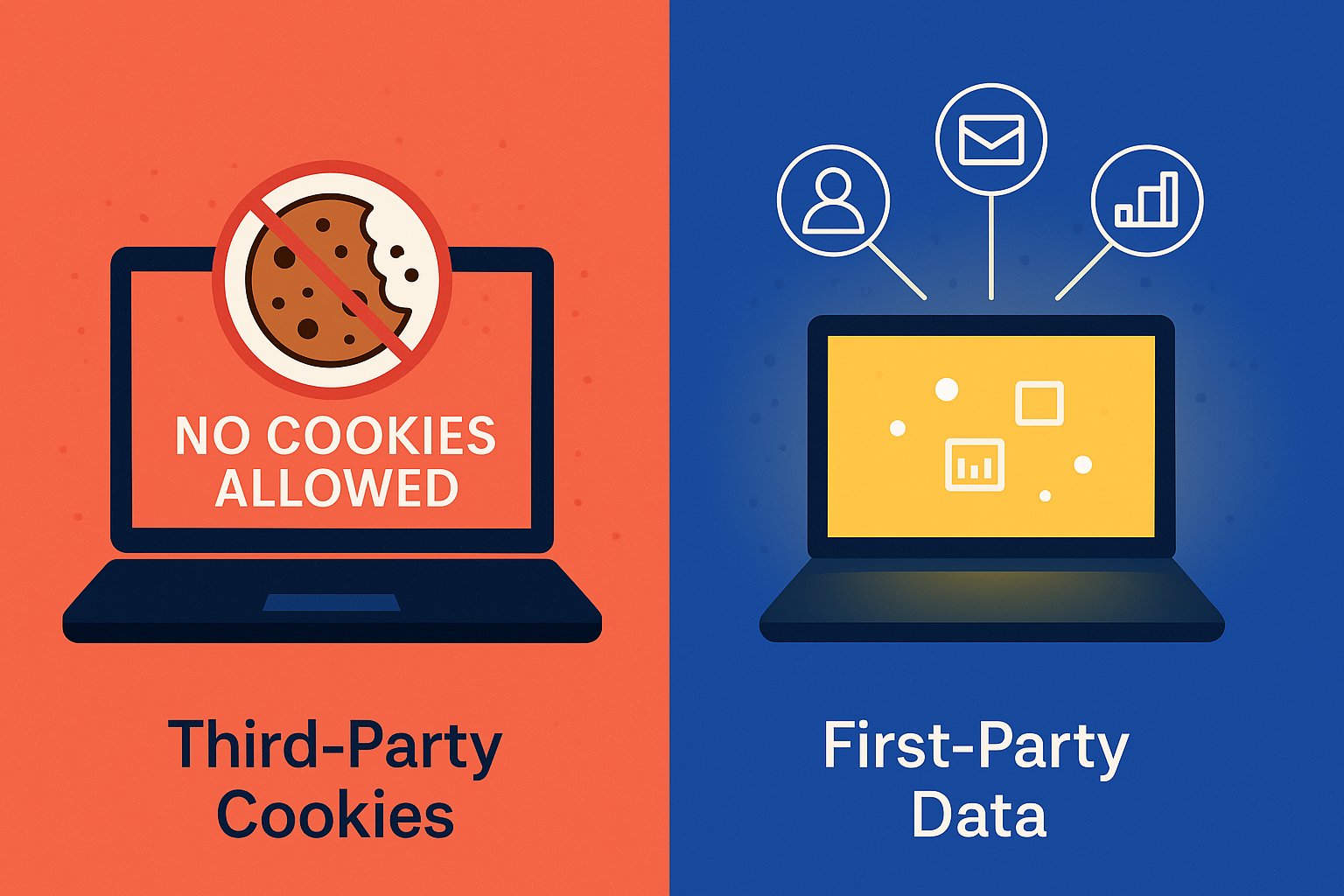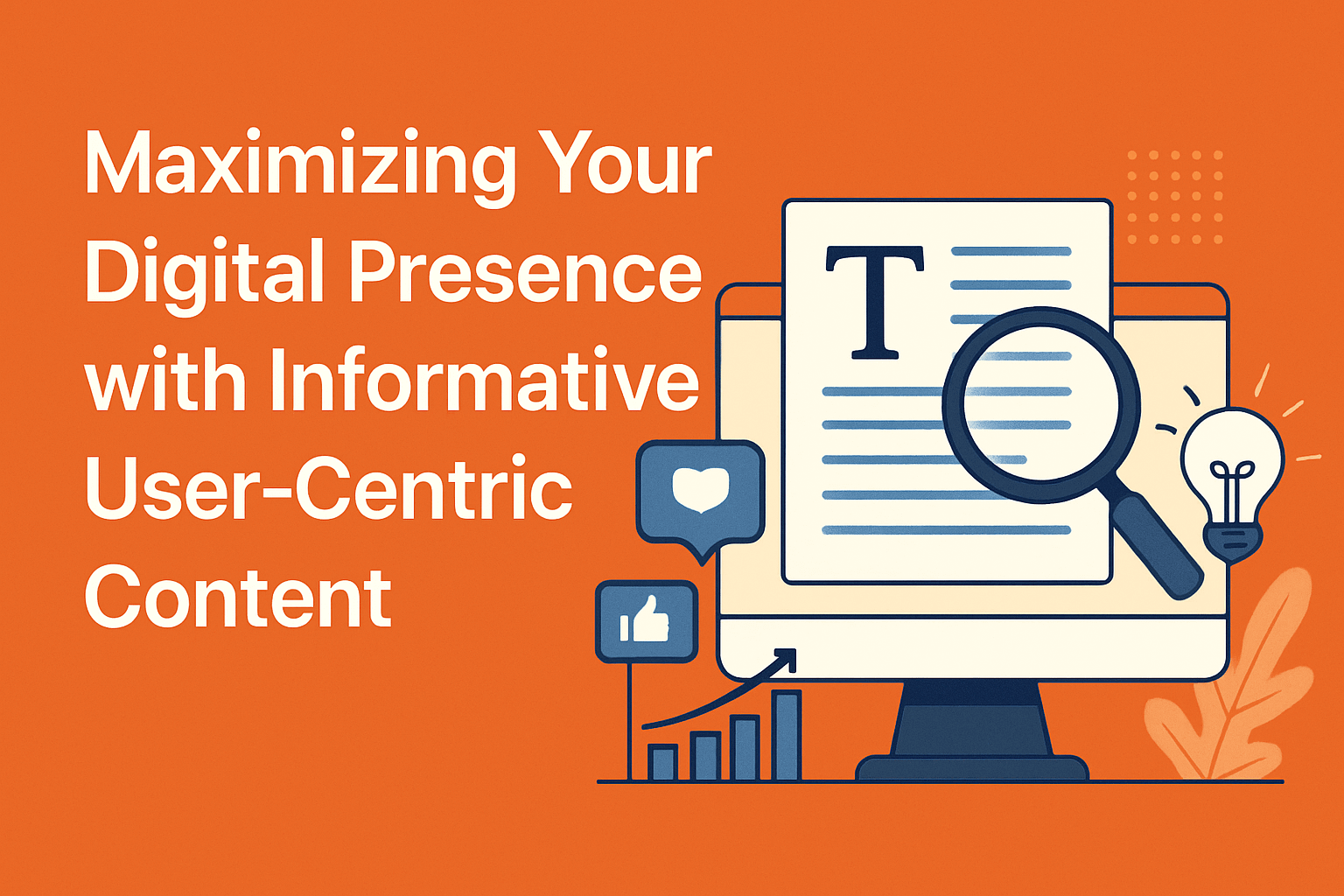Digital Strategies: First-Party Data, Contextual Advertising, SEO
READING TIME: 4 MINUTES
Building Digital Experiences in a Cookie-less Future
Published on: April 15, 2025

With third-party cookies being phased out—especially from Google Chrome—many marketers are questioning how to adapt. But this shift isn’t necessarily a setback. In fact, it’s an opportunity to create more trustworthy, value-driven customer relationships using first-party data.
As data privacy laws become stricter, brands must move away from reliance on third-party tracking and embrace more ethical, transparent methods of marketing. Let’s explore how businesses can evolve in this cookie-less world.
Read the full article
Third-party cookies collect user data across multiple websites for the purpose of retargeting ads. First-party cookies, in contrast, store user preferences and login details to enhance user experience on a specific site.
While third-party cookies were once central to targeted advertising, they often fell short of expectations. A Forbes study found that hyper-targeting based on third-party data frequently missed the mark. In many cases, brands even reduced ad budgets for cookie-based campaigns and saw no dip in performance.
The truth is, mass-scale data collection without user consent has eroded trust. Today’s consumers expect transparency and relevance—not intrusive tracking.
As browsers drop support for third-party cookies, businesses must pivot their digital marketing efforts. The focus now should be on creating personalized experiences with consented data and contextual relevance.
According to a Deloitte survey, 61% of high-growth companies are already prioritizing first-party data strategies to stay ahead. These brands are using dynamic creative optimization, personalized email campaigns, and predictive analytics to deliver targeted messages without relying on third-party tracking.
Here’s how you can prepare your business for this transition:
1. Audit Your Current Dependence on Cookies
Use a cookie audit tool to analyze where your website currently relies on third-party tracking. Identify high-risk areas and start planning alternatives.
2. Build Infrastructure for First-Party Data
Set up systems like a Customer Data Platform (CDP) to gather, organize, and activate customer data across all touchpoints—from email to support chats to purchase history.
3. Create Value-Driven Data Exchanges
Give users a reason to share their information. Loyalty programs, gated content, and personalized product recommendations can all encourage data sharing in exchange for better experiences.
4. Focus on Cohort-Based Analytics
Instead of targeting individuals, analyze and understand group behaviors. This allows for personalization at scale while respecting user privacy.
First-party cookies and permission-based data collection are powerful tools—if used wisely.
✅ Encourage Registrations
Start with the basics: collect email addresses through newsletter signups, account creation, or exclusive offers. Be transparent about how this data will be used to build trust from the beginning.
✅ Use Progressive Profiling
Ask for minimal information upfront and gather more over time as trust builds. This avoids overwhelming users while gradually enhancing your understanding of their needs.
✅ Tap Into Email & SMS Marketing
Both channels offer direct communication without relying on external data. Use them to promote offers, share updates, and drive engagement—with content that adds real value.
✅ Explore Contextual Advertising
Rather than tracking user behavior across the web, contextual ads place content based on the relevance of the page being viewed. This approach is both privacy-friendly and effective.
✅ Adopt a Hybrid Marketing Model
A balanced approach—combining in-house expertise with external marketing partners—ensures better brand alignment, messaging accuracy, and higher content quality.
The decline of third-party cookies marks a pivotal moment for digital marketing. While it may feel like losing a key targeting tool, it’s actually a chance to reset the relationship between brands and consumers.
By shifting focus to first-party data, ethical content strategies, and trust-building engagement, businesses can build deeper, more sustainable customer relationships—without sacrificing performance.
The future is cookie-less—but it’s also brighter, more transparent, and more human.

 Maximizing Digital Impact Through Informative and User-Centric Content
Maximizing Digital Impact Through Informative and User-Centric Content